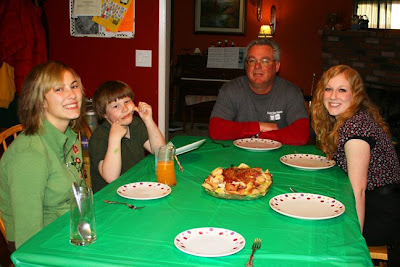I've reached my first destination! Virtual destination, that is. 5.5 miles on Hwy. 101 is Darlingtonia State Natural Site, and I made this stop on Friday. The first time we were there was last year when we went looking for a cache while geocaching up Hwy. 101. I would have never thought to stop here otherwise, but I am so glad we did. This little park has a pathway up to the carnivorous plants. Below the plants is a little grassy area with picnic tables. There are trees all around. Old trees, with their large roots sticking up above the ground. The kind of place you'd imagine fairies and hobbits to be living in. No wonder I'd love to live there.

Darlingtonia State Natural Site is the only Oregon state park property dedicated to the protection of a single plant species. Concurrently, the plants it protects are the only carnivorous flora in the system.This 18-acre botanical park provides parking and a boardwalk trail out into a fen that is home to Darlingtonia californica. Also called a cobra lily, the rare, strangely-shaped plant is the only member of the pitcher plant family (Sarraceniaceae) in Oregon.What visitors see in this little garden of multi-colored horrors (for insects), is a plant with yellowish green hooded leaves that form erect, 10 to 20-inch-high hollow tubes. On top, the leaves are often purplish to reddish mottled with transparent areas. A hidden opening into the stalk is bordered by a large, green, mustache-shaped appendage beneath the curved hood of the leaf. Nectar inside the plant's hidden opening attracts the insects. Once inside, an insect becomes confused by the transparent areas that appear like exits. It's all "downhill" for the insect from that point as it eventually drops into the lower part of the tube, is trapped by downward-pointed hairs and falls into a pool of water at the bottom of the stalk. Bacteria in the water decompose it into nitrogen that is then absorbed by the plant.

















